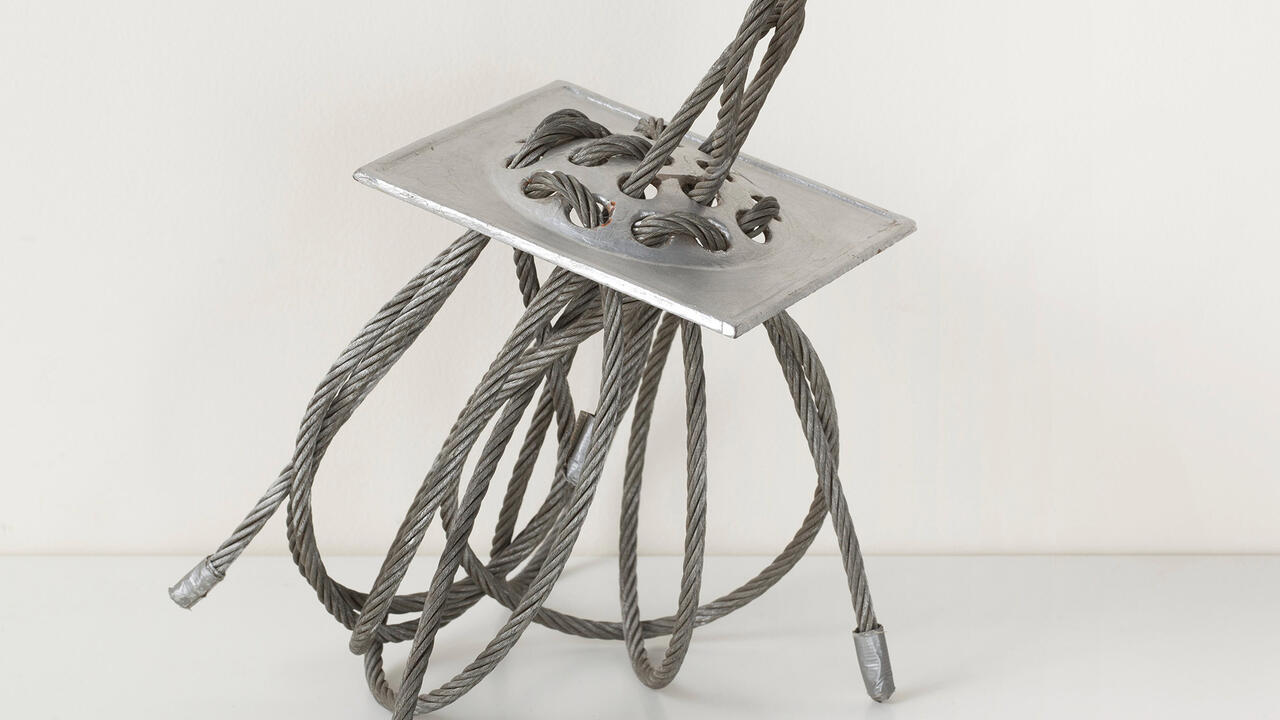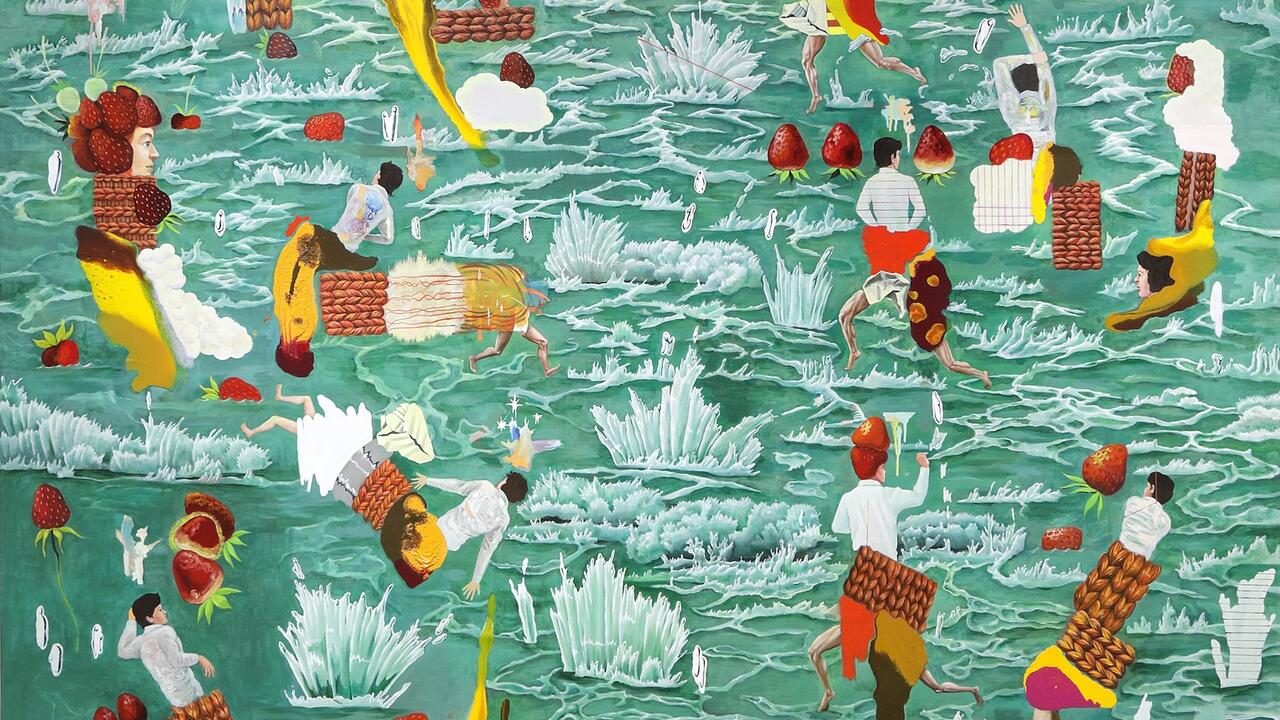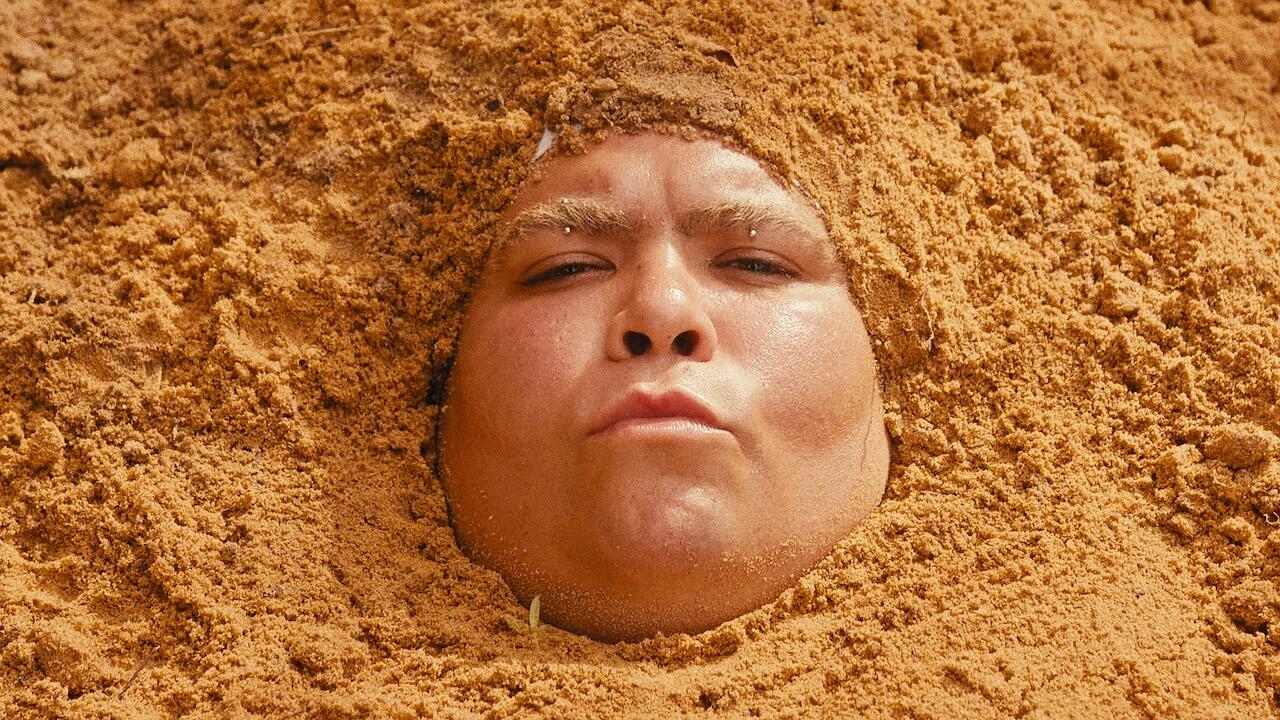Tarek Atoui on Hospitality, Collaboration and Expanding Musical Instruments
The artist and composer on integrating pedagogy into his practice, rethinking instruments and preparing for his first solo exhibition in Italy at Pirelli HangarBicocca
The artist and composer on integrating pedagogy into his practice, rethinking instruments and preparing for his first solo exhibition in Italy at Pirelli HangarBicocca

C. Spencer Yeh Pedagogy is a core element of your practice, evident from the numerous workshops you have led over the years, most recently The Hive [2024] at the Bourse de Commerce in Paris. How did this come about?
Tarek Atoui Teaching is something I have enjoyed from the outset. In 1998, at the age of 18, I had the opportunity to leave my native Lebanon to study electroacoustic music at the French National Conservatory of Reims. There I learned things that, to me, seemed amazing. Years later, I realized other people would love to have the same kinds of learning opportunities, too – they just didn’t have access to them.

The first workshops I did were in France in 2004, at a centre for children of the employees of the French national electricity company [EDF]. I was exploring the basics of sound and amplification. Afterwards, I thought, ‘Why don’t I take this to the Palestinian refugee camps in Lebanon?’ So, I went in 2005. Then, in 2007, I took it to Cairo. After that, I used the idea as an excuse to be on the road as part of my identity as a musician; I’d travel around leading workshops, the way a band might perform at a concert. Little by little, as the number and scale of these workshops increased in line with my involvement in large curatorial projects, and opportunities for residencies also arose, I started to think about how to incorporate this work into my broader practice, in a very natural way.
At a certain point as an artist, you come to realize that you don’t want to be spending all your time making work for exhibitions.
At a certain point as an artist, you come to realize that you don’t want to be spending all your time making work for exhibitions. Just as musicians don’t want to feel sucked into touring and playing concerts. You think: let’s bring education into this constellation, too – not just in terms of what I can teach, but also what I can learn. In Organ Within [2019], for instance, in which you also participated, I collaborated with the instrument-makers Vincent Martial and Léo Maurel on building an organ.

CSY How did you develop your work in the field of electronic music into a sound art performance and exhibition-making practice?
TA In the early 2000s, after graduating from the Conservatory of Reims, I began working with electronics – computers, MIDI controllers, sensors, etc. – and learning how to improvise, which was a lot of fun. I also did a residency in 2006 at Studio for Electro-Instrumental Music [STEIM] in Amsterdam, where I worked with the Dutch electroacoustic composer and artistic director of STEIM, Michel Waisvisz. Michel soon became a good friend and, in 2007, he invited me to join him as co-artistic director for a year.
Sadly, Michel passed away in 2008, and it felt the right time for me to return to the Middle East. I wanted not only to take back some of the things I had learned in Europe, but also to see how I could develop those ideas further in parts of the Arab world. From there, I just kind of fell into making art. That’s why my first art event – Un-drum at the Sharjah Biennale in 2009 – was in the Arab world. It was a shift that also came about due to the places I was navigating, where the cultural infrastructure was not as developed as in Europe or the US. For instance, I might be playing music in a venue that served multiple functions – gallery, concert hall, cinema – and where all creative practices were regarded equally. From this register, I slid into the art world, and invitations and opportunities multiplied.

CSY You worked with composers Éric La Casa and Chris Watson for your touring show ‘Waters’ Witness’, which originated at the Fridericianum in Kassel in 2020. It showcased your project I/E (Infinite Ears) [2015–ongoing], in which you use sound recordings of various coastlines, from Athens to Abu Dhabi. What was it like to collaborate with Watson and La Casa, whose practices are arguably very different than that of an improviser?
TA Working with Chris and Éric – or with others whose practices involve recording sound – is actually very similar to how I work with improvisation: it’s about knowing how to insert yourself correctly into the present tense or how to find your spot in a complex situation. The act of recording is precisely this: how you position yourself within the frame of what you’re trying to record. In Éric’s work, for instance, there’s a dynamic process. He’s not in a fixed position just letting the tape roll. He’s actively moving the microphone, sculpting the sound, focusing on particular frequencies, on certain matters like air movement or a detail in the sound.
From more traditional musicians to more contemporary improvisers, I started paying attention to how each of them works and what singular qualities they bring to the table. When you and I worked together on Organ Within, I asked you to bring an instrument you like, and you came with a violin. I’m interested in discovering people’s affinities, their sensibilities and methods of doing, rather than in dictating what I want from them.
CSY What would you say is your own singularity? Or do you feel yourself increasingly becoming like a conductor?
TA To be honest, yes: sometimes I’m hosting; sometimes I’m performing; sometimes I’m just giving instructions. It’s about wearing all these different hats. Sometimes I also have to step in and be the guy who says, ‘Okay, this is how we’re going to do it.’ So, it’s not totally open, but it is about being hospitable and trying as much as possible to create a space in which everybody can feel like they are in the right place.

CSY I’m interested in this idea of being hospitable. Where does that come from?
TA The notion of hospitality is deeply embedded in all cultures, but especially in the Middle East, where it has significant societal value. It is not only ingrained in daily life, but also celebrated throughout history in poetry and literature. It’s a quality that individuals are expected to display at all times, ever-ready to extend generosity and warmth. I grew up with this understanding, so hospitality naturally became a fundamental consideration in my work, too.
True improvisation is not random; it’s the result of years of dedication, honing unique sounds, techniques and identities.
In the context of a biennial, for instance, where there are numerous artists and constant activity, it’s essential to ensure that the environment feels comfortable for those you have invited to participate, enabling transitional moments to happen in meaningful ways when moving between different cultural or artistic worlds.
Hospitality, in this sense, involves a careful and responsible approach to bringing ideas and people together. It also means respecting those who improvise. True improvisation is not random; it’s the result of years of dedication, honing unique sounds, techniques and identities. When you welcome an improviser, you acknowledge this journey and provide a space in which their individuality can flourish. For musicians, hospitality is about respecting the personal and cultural ‘baggage’ they bring. It’s about creating an environment where their work is honoured and can express itself fully, without being stifled or diminished.

CSY Let’s talk about your forthcoming exhibition at Pirelli HangarBicocca in Milan – your first solo show in Italy – which will bring together existing works with new commissions.
TA I don’t consider these new works, so much as a natural progression in my practice. I’ve made tons of instruments and I haven’t fully explored the potential of them all. They’re instruments – they’re not meant to be used for just one piece or one exhibition – so reusing them is simply common sense. My proposal for the exhibition at HangarBicocca is an homage to improvisation, and comes as a sequel to my current show at Kunsthaus Bregenz [KUB]. While my proposition at KUB brought together three distinct projects, each presented on a different floor of the museum, the exhibition in Milan will dismantle and reassemble these projects in a new composition, using HangarBicocca’s vast space. This will be done as a ten day improvisation that will be taking place with my team, the museum’s team and myself.
CSY Don’t you find there’s always this pressure to do something new?
TA In the art world, it took some time for galleries and museums to embrace this idea of repeating the same works or using the same instruments in different contexts. There doesn’t have to be just one or two editions; it can be infinite. So, it’s a whole different logic than applies to painting, for instance. It’s just following its own logic, and that’s what I like about it. For HangarBicocca, instead of producing new artworks, the innovation is in the work method and extending my approach and practice of improvisation.

CSY When did you first present all these instruments together?
TA ‘The Wave’, my exhibition for the 2019 Okayama Art Summit, was the first one I did along these lines. I borrowed from The Ground [2017], The Reverse Collection [2014–16] and Organ Within and put a piece together that had a totally different meaning.
CSY In a number of these works, it feels like you are drawing on different elemental forces: Organ Within, for instance, is very reliant on the act of pushing air; The Whisperers [2021–22], on the other hand, has to do with friction.
TA You’re right, there is friction in The Whisperers. This came from using systems and acoustic environments that can amplify and produce sound out of vibrations in materials, elements in contact with each other, conjugated together. The Whisperers are also inspired by four educational workshop sessions I held with students from my son’s kindergarten class at the École alsacienne in Paris between November 2020 and June 2021. These assemblages of plastic, wood, brass, water, bronze, glass and stone allow for experimentation with the acoustic properties of each material and how they transmit and reflect sound. So, The Whisperers are meant to channel sound, rather than function as instruments per se.

CSY Yet, at the same time, there still is the opportunity to modulate and adjust things so that the piece can move in certain directions. And there’s also the element of a ‘master brain’ or computer that can play a composition when no one is there. Can you touch on that?
TA This is also something that became important to explore for me, because it’s effectively an extension of the techniques that I was using initially – computer programming and electronics – and of the way I compose with these interfaces and software. The ‘master brain’ you mention, which is the software I write, can be automated. That allows me, or anyone else, to compose generative, algorithmic pieces that bring these instruments to life in fun ways without the performers being present. The movements of motors, switches and instruments all become part of the composition. This, in turn, broadens the scope of what an instrument is and makes us reflect on how the sound is being extracted and how we can see it happen.
CSY Can you talk about the composition process and how it relates to individuality?
TA Most of my instruments aren’t made by me; they are crafted by people whose profession is to make them. As I was saying earlier, they are not like artists’ limited editions or numbered series. The maker has the authority to make as many instruments as they want. So, you don’t need to buy the instrument as an artwork from a gallery, you can buy it from the maker. What you buy from the gallery – or what the collectors and institutions have access to – is the composition through which these instruments come to life.

CSY I find your point about what an instrument might be very interesting. When you look at The Reverse Collection or Organ Within, you can immediately tell that these are objects which haven’t existed before, yet they are still recognizable as instruments. However, in a large-scale installation such as The Rain [2023] – an immersive soundscape featuring an array of traditional Korean percussion instruments – each element operates as a component part of the whole, like an ingredient in a recipe.
TA With The Rain, I wanted to create something that had a sense of multiplicity. I wanted to use a variety of sounds – shimmering, dripping, rubbing, friction – to build up acoustic layers to give the feeling of rain rather than just the sound of rain. To do this, I started from the Korean drum tradition, working with a drum maker named Seok Seo to deconstruct the whole vocabulary of the instrument – the ropes, the skins, the materials – and rebuilding it in such a way that we could play our drums using heat, vibration, water and wind. Over a period of five years, we made about 50 hybridizations of drums, a big orchestra that played together to produce this more complex sound. The Rain comes from my travels and explorations throughout Southeast and East Asia, from Korean percussion to traditional wind instruments common to Vietnam, Cambodia, Thailand, Japan, Korea and China – something I hope to share with audiences in the years to come.
This article first appeared in frieze issue 248
‘Tarek Atoui’ is on view at Kunsthaus Bregenz until 12 January and ‘Tarek Atoui’ will be on view at Pirelli HangarBicocca, Milan from 6 February
Main image: Tarek Atoui, I/E Elefsina (detail), 2015–16, photographic documentation. Courtesy: the artist and Galerie Chantal Crousel, Paris; photograph: Alexandre Guirkinger























